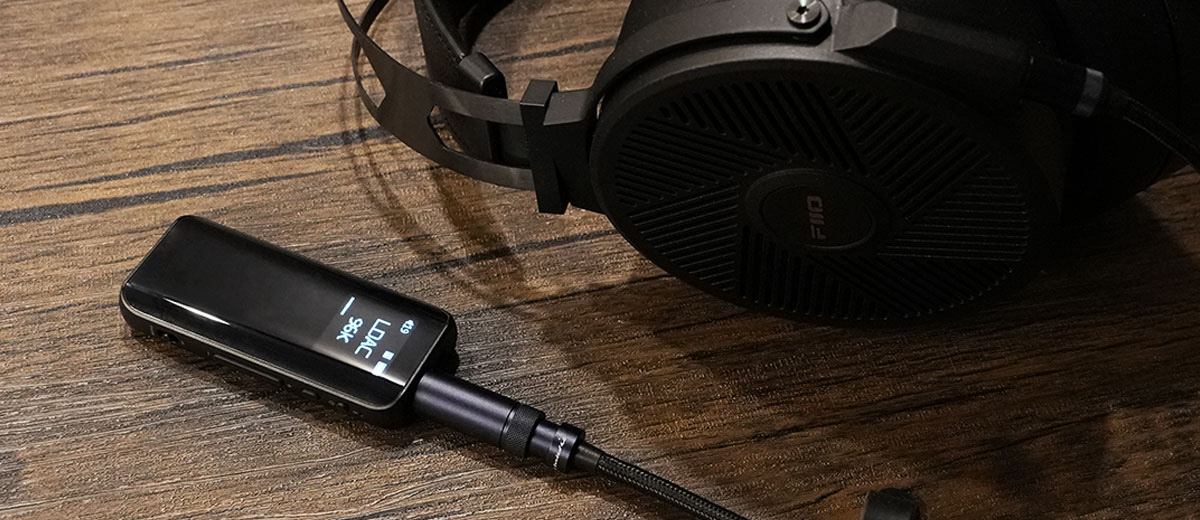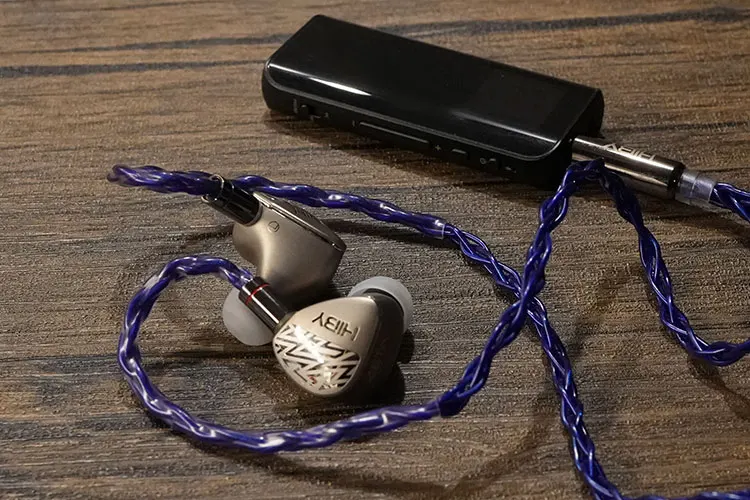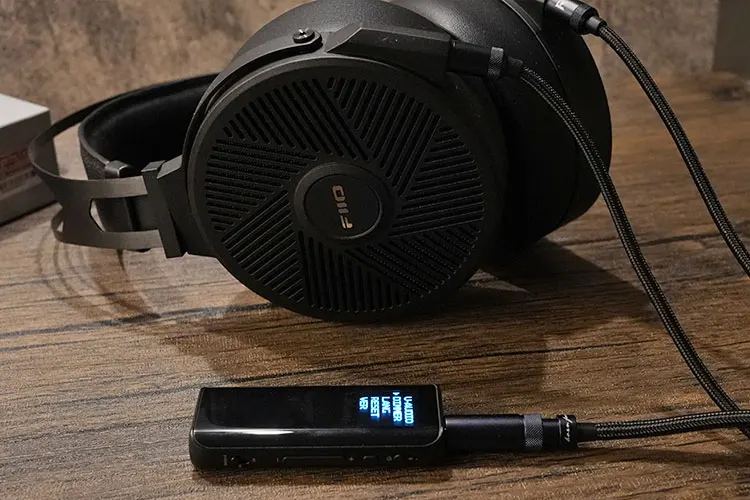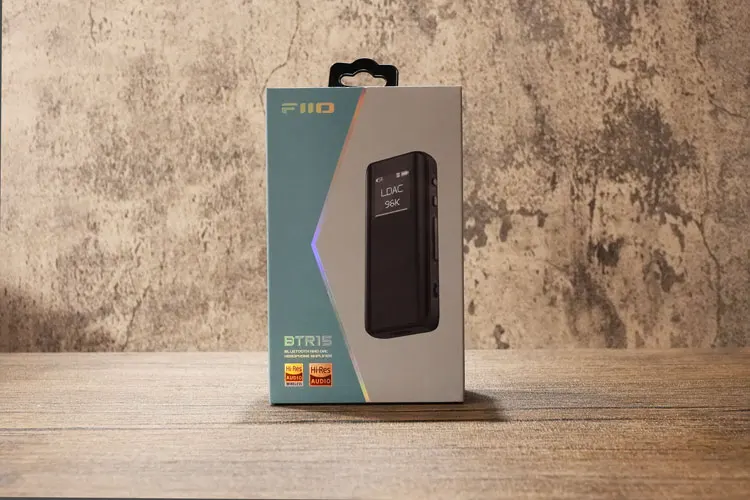Wireless Connectivity
Bluetooth
The BTR15 provides instant connectivity and supports various codecs, which can be conveniently switched between using the app control. Supported codecs include LDAC and aptX Adaptive, which offer improved lip-sync performance.
When using aptX, the BTR15 showcases impressive connection strength, allowing for clear signal reception even through thick walls and at a distance of up to 15 meters from the phone.
On the other hand, LDAC may provide a slightly smoother audio experience with more micro-details, with its higher bit-rate and advanced encoding technology.
Wired Connectivity
USB-DAC
When connected to a USB source, the BTR15 delivers a more textured and defined output, particularly in the treble range. It functions similarly to a USB-C dongle and operates using the device’s battery.
In PC mode, where the BTR15 draws power from the source, the output exhibits a slightly higher level of resolution and openness compared to when powered by the phone over the same USB-C cable.
This mode takes advantage of the power supply from the PC and utilizes the XMOS solution, potentially enhancing the overall performance.
Moreover, the BTR15 supports high-resolution audio decoding, including up to PCM 32bit/384kHz and DSD256 formats.
This capability enables the device to achieve even better performance than on Bluetooth connection, as it can handle higher-quality audio files with greater precision and fidelity.
Synergy
Efficiency
The BTR15 showcases excellent noise control across different gain levels, maintaining a dark background without compromising dynamics.
Even when using sensitive IEMs like the HiBy Zeta, which has a rating of 9Ω in impedance, there is no noticeable noise interference. This indicates that the BTR15 effectively minimizes any potential background noise, allowing for a clean and undisturbed listening experience with highly sensitive headphones or IEMs.
Power
When using the BTR15 as a USB DAC powered by a laptop, the resolution of the audio is further enhanced, resulting in a more detailed and nuanced presentation. Vocals gain a greater sense of stereophonic presence and richness, adding to the overall musical experience.
When stress testing the BTR15 with the FiiO FT5 planar headphones, it performs admirably well. The sound remains clear and focused, without any veiling or loss of detail.
This suggests that the BTR15 is capable of driving and complementing a wide range of gears thanks to the higher output power.
Pairings
When paired with sensitive IEMs like the HiBy Zeta, the BTR15 achieves a better balance, providing sufficient power in the bass to deliver a clean yet engaging sound.
However, when stress-tested with higher loads such as the Shanling MG600 IEM, the BTR15 exhibits more sparkle and can get hot at times.
This works well for lighter voices, allowing them to sound swifter with more power in the upper register to cut through. However, the bass may not sound as dense and impactful as with sensitive IEMs.
Pairing the BTR15 with the FT5 planar headphones yields surprisingly good results as said, mainly because the bass sound is layered and detailed. The sweet spot is at a higher volume as the bass dominates the output, though the separation is still commendable.
Testing with Techno tracks from the 80s showcases a solid bass attack and vocal harmonics that are delivered with good linearity.
EQ can further enhance the BTR15’s performance. Boosting the treble frequencies and slightly reducing the mid-bass can open up the treble for more air and achieve a better balance.
When playing DSD via PC mode and applying equalization, the output quality is impressive, particularly in the boosted treble frequencies.
Testing the BTR15 with the Moondrop PARA yields satisfactory levels of resolution and clarity. It outperforms some other dongles with 4.4mm output, delivering a clean and distinct image. The output is well-defined, and the vocal reproduction has good fullness, which is suitable for streaming.
Once again, the parametric equalizer proves to be very helpful in enhancing the overall balance and providing a nudge to the vocal or acoustic instruments.
This feature is particularly handy when pairing the BTR15 with higher impedance or open-back IEMs, which may lean more towards the treble end or sound less dynamic in the lows.
Select Comparisons
FiiO BTR5 2021
Technical
The BTR15 is built upon the success of its predecessor, the BTR5 2021, and it incorporates several notable enhancements.
Some of the key upgrades include the addition of aptX Adaptive, an upgrade to Bluetooth 5.1 utilizing the QCC5125 chipset from CSR8675, the adoption of the newer ES9219MQ DAC, and an upgrade in the XMOS solution from Xuf208 to Xu316.
These improvements result in a significant boost in output power. The balanced output sees an increase of over 40% in output power, while the single-ended output experiences a boost of over 80% in output power.
However, it’s worth noting that this increase in power comes at the cost of slightly reduced playback time, with the battery lasting 1 hour less to support the higher output capability of the device.
Design
The BTR15 showcases a more appealing design with a curved form factor and a larger screen compared to its predecessor, the BTR5 2021. The screen size has been increased from 0.49 inches to 0.96 inches, providing a more spacious and visually appealing display.
One notable change in the BTR15 is the absence of NFC pairing functionality. However, it introduces a new mode switch that offers users the flexibility to use it as a dongle.
Additionally, this new switch allows users to choose whether to utilize the battery on board, providing more control over power usage.
Performance
The BTR15 demonstrates a noticeable increase in power and detail retrieval while maintaining its clean signature.
The additional horsepower allows the BTR15 to effectively drive small headphones and even sensitive planar magnetic headphones like the FT5, thanks to the inclusion of a 4.4mm connection that can fully utilize the device’s output power.
In terms of sound signature, the BTR15 offers improved clarity and energy compared to the BTR5 2021. It may have a slightly more V-shaped sound profile, with a punchier bass response. The mid-lows are slightly warmer, which helps to balance the extended and clearer treble.
When comparing the two devices using drum and double bass test tracks, it becomes evident that the BTR5 2021 sounds softer and less prominent in bass delivery. The positioning of instruments is also not as distinct, especially at higher volumes.
While the difference may be less noticeable with very sensitive earphones, the BTR15 easily stands out when used with multi-BA or higher impedance hybrid earphones, delivering a more impactful and detailed sound experience with better extension and definition.
FiiO BTR7
Technical
The BTR7 is equipped with THX AAA 28 amplifiers but shares several similarities with the BTR15.
Both devices utilize the QCC5124 chipset and ES9219C decoding chips. However, the BTR15 takes a step further by using the newer QCC5125 Bluetooth chips and ES9219MQ chips.
Another distinction is that the BTR15 employs the XU316 XMOS solution, while the BTR7 uses the Xuf208, similar to the BTR5 2021.
Despite being larger, the BTR5 has a slightly lower maximum output power on balanced output compared to the BTR15. The BTR5 can deliver up to 320mW, whereas the BTR15 can provide 20mW more at its maximum output.
However, the BTR5 excels in single-ended output, delivering 165mW to 32Ω loads. In contrast, the BTR15 offers a weaker output at 125mW for 32Ω loads, but it matches the BTR5’s output at 165mW when driving 16Ω loads.
Surprisingly, the BTR15 demonstrates better noise control compared to the BTR7. It achieves noise levels below 2.7uV on balanced output, which is less than half of the measurement seen in the BTR7.
Additionally, the BTR15 boasts a higher signal-to-noise ratio (SNR) of 122dB, surpassing the BTR7 by 5dB, and contributes to the dynamics.
Design
The BTR7 is bulkier and heavier compared to the BTR15, weighing approximately 68g, which is nearly double the weight of the BTR15. It also appears larger, making it feel about 20% larger in size.
In terms of aesthetics, the BTR15 offers a more pleasing design, particularly with its curved glass. However, the BTR7 compensates with a larger screen that provides better readability.
While the physical differences between the two devices are notable, the overall experience and functionality are quite similar. Both the BTR7 and BTR15 can function as dongles via USB connection, allowing for convenient audio output from compatible devices.
Performance
Both the BTR15 and BTR7 exhibit outstanding noise control, with the BTR15 performing slightly better at higher volumes, offering a darker background.
While the specifications may favor the BTR15 on paper, in practical terms, the performance of the BTR15 is quite comparable to the BTR7 when driving small loads.
When testing with IEMs, the BTR7 demonstrates stronger control and evenness, while the BTR15 has a slightly warmer and more engaging sound, particularly suited for R&B and Pop genres. When paired with sensitive IEMs, both devices perform similarly in terms of quality.
However, when using higher impedance IEMs, especially with the 3.5mm output, the BTR7 tends to sound more refined, and polished, offering a fuller low-end with solid and deep bass delivery.
The notable differences become more apparent when using headphones that require more power from the source.
The BTR7, with a dedicated THX amping section, is more capable of delivering a solid and immersive vocal image, particularly noticeable with lossy recordings. The bass is cleaner, the treble is more extended and micro-detailed, and there is a stronger transient response.
The naming choice of the BTR15 as the successor to the BTR5 can be a bit confusing, as the BTR15 does not necessarily surpass the capabilities of the BTR7.
However, if you don’t require heavy load capabilities, the BTR15 can function well and provide better value for your needs.
Our Verdict
The FiiO BTR15 not only fulfills the long-awaited desire for a 4.4mm version of the BTR5, but it also exceeds expectations with improved output power and functionalities.
Its ability to power sensitive headphones effectively while delivering pleasing tonality and quality, combined with the flexibility of parametric equalizers, makes it a true audio Goliath.
It’s not just about power. This device truly blurs the line with small DAPs as it can power some of the more sensitive headphones effectively while delivering pleasing tonality and audio quality.
Even when compared to other USB dongles in its price range, the BTR15 remains highly competent and worthy of recommendation.
While there may be a few minor gripes, such as the absence of a quick charge and a leather case, these are just small blemishes on an otherwise outstanding device.
FiiO BTR15 Technical Specifications
- Bluetooth chip: QCC5125 (CPU+DSP dual-core architecture)
- Bluetooth version: 5.1
- USB chip: XMOS XU316
- DAC: ES9219MQ*2
- Bluetooth codecs: AAC/SBC/aptX/apt LL/aptX Adaptive/apt HD/LDAC
- USB DAC: Asynchronous 384kHz-32bit, DSD256
- USB DAC driver-free mode: Supported
- Display: 0.96-inch 96×96 resolution OLED
- Headphone outs: Single-ended 3.5mm + Balanced 4.4mm
- Dimensions: About 32.0mm x 72.2mm × 12.5mm
- Weight: About 37.3g
- Charging time: < 2h
- Battery: 550mAh high-temperature resistant lithium-ion
- Battery life: About 8 hours
- Output power 1: L+ R ≥ 125 mW+125mW (32Ω single-ended /THD+N < 1 %)
- Output power 2: L+ R > 15 mW+ 15 mW (300Ω single-ended /THD+N < 1%)
- Output power 3: L+R≥ 340mW + 340mW (32Ω balanced/THD+N< 1%)
- Output power 4: L+R≥ 50mW+ 50mW (300Ω balanced/THD+N < 1%)
- Frequency response: 20Hz~50kHz (-0.8dB)
- Signal-to-noise ratio: >122dB (A-weighted)
- Noise floor: PO <2 uV (A-weighted); BAL < 2.7 uV (A-weighted)







